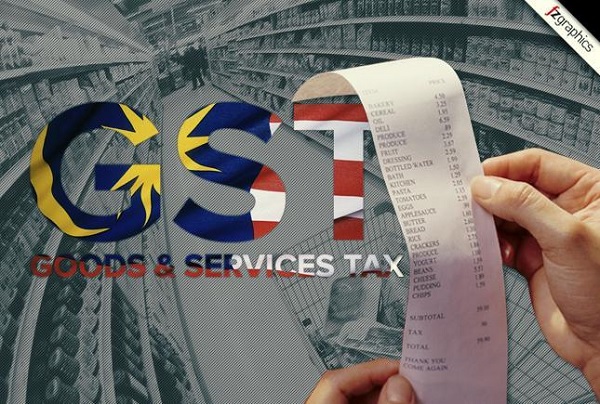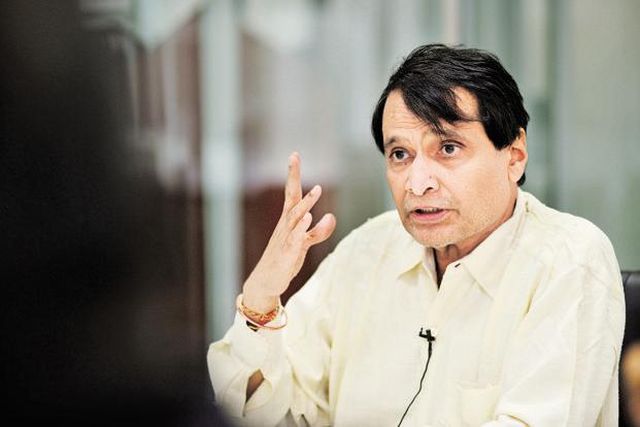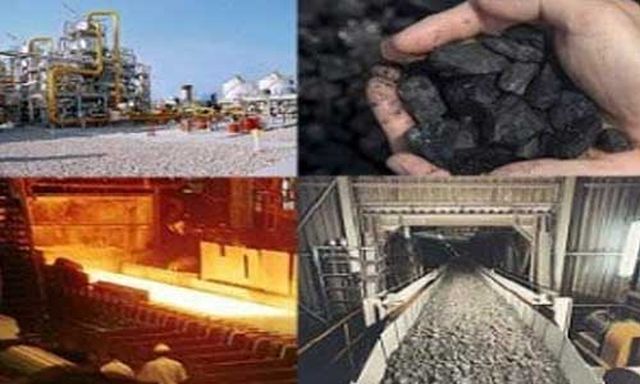
by admin | May 25, 2021 | Economy, News
 Bhubaneswar : Odisha’s economy is estimated to grow at 7.14 per cent as against the national average of 6.5 per cent in 2017-18, a report said on Thursday.
Bhubaneswar : Odisha’s economy is estimated to grow at 7.14 per cent as against the national average of 6.5 per cent in 2017-18, a report said on Thursday.
According to the Economic Survey Report 2017-18, tabled in the state assembly, Odisha’s Gross State Domestic Product (GSDP) is estimated to grow at a rate of 7.14 per cent at 2011-12 prices, which surpasses all India growth rate of 6.5 per cent.
In terms of the size, GSDP at 2011-12 prices stood at Rs 2.30 lakh crore in 2011-12 and increased to Rs 3.23 lakh thousand crore in 2016-17.
It is further expected to rise up to Rs 3.46 lakh crore in 2017-18, showing a growth rate of 7.14 per cent compared to 2016-17, the report said.
The per capita income at base year price of the state in terms of GSDP is estimated to be Rs 77,193 in 2017-18, which experienced a 6.06 per cent rise from Rs 72,780 in 2016-17.
At current prices, the per capita income of the state during 2017-18 is likely to touch the level of Rs 92,727, while it will be Rs 126,349 at the national level.
The report said that service sector as a leading contributor to GSDP has contributed 38.54 per cent in 2011-12 which increases tremendously to 45.22 per cent in 2017-18 and surpasses agriculture and industry sector over years.
The sector exhibited an accelerated growth rate of 10.7 per cent in 2016-17 and is estimated to grow at 12.4 per cent in 2017-18, it added.
The consumer price inflation in the state exhibited a fluctuating trend and was the lowest level of 1.3 per cent in 2017 (up to November 2017) as against all India level of 3.1 per cent.
The share of agriculture has declined to 20 per cent from an overbearing 60 per cent in the 1960s, but the share of population dependent on the sector continues to be significant at around 50 per cent.
The report said there was a need for continued policy priority for agriculture, especially in its allied sectors, in view of the high employment potential and favourable agro-climatic conditions.
The mining, manufacturing and construction sectors were estimated to grow moderately at 4.6 per cent, while electricity, water supply and other utility services sub-sector is expected to clock a growth rate of 9.6 per cent, the report added.
—IANS

by admin | May 25, 2021 | Economy, Finance, News, Politics
 New Delhi : The introduction of Goods and Services Tax (GST) has established India as one of the major economic markets in the world by removing uncertainties in the countrys tax system, Prime Minister Narendra Modi said here on Friday.
New Delhi : The introduction of Goods and Services Tax (GST) has established India as one of the major economic markets in the world by removing uncertainties in the countrys tax system, Prime Minister Narendra Modi said here on Friday.
“Before 2014, India’s tax system was seen as unfriendly, unpredictable and non-transparent for the investors. But the situation is changing now. The GST has established India as one of the major economic markets in the world,” he said in his address at an event organised by the CNN-News18 TV network.
Modi said that In the last 3-4 years, India has lent strength to the world economic growth as well along with its own growth and pointed out that the country that is just three per cent of the world GDP is contributing “seven times more in the growth of world economy”.
“In the third quarter of 2017-18, India has achieved a growth rate of 7.2 per cent and economists say that this would further accelerate.
“India is performing well in all the macroeconomic parameters such as inflation, current account deficit, fiscal deficit, GDP growth, interest rates, foreign direct investment (FDI) inflow etc. The rating agencies are revising India’s ratings upward,” he said.
The Prime Minister said that while India is among top three prospective host economies, in the FDI confidence index, it is being counted among top two emerging market performers.
In the last three years, the country has improved by 42 points in the World Bank’s ‘Ease of Doing Business’ index, he said.
Modi said that India has started getting membership of the bodies it had been seeking for decades such as the Missile Technology Control Regime (MTCR), The Wassenaar Arrangement (on Export Controls for Conventional Arms and Dual-Use Goods and Technologies) and the Australia group.
India’s influence has been rising internationally and that in the last 3-4 years, his government has worked meticulously to achieve this, he said.
He said that India winning elections at the International Tribunal for Law of the Sea, the International Maritime Organization, UNESCO and the International Court of Justice shows India’s rising influence.
Modi said India has at various big international fora including the United Nations and the G-20 vehemently raised issues which affect the whole world such as climate change, terrorism and black money.
He said that India has given a new direction not just to its own development but also to that of the entire world. India is leading the world in solar energy revolution.
“In Yemen crisis, other nations also sought India’s help to evacuate their citizens. We safely evacuated nationals of 48 countries from Yemen along with our own citizens,” Modi said.
He said that the growing popularity of yoga and ayurveda across the world was also an extension of Rising India.
“My government is working with a holistic approach keeping in mind the aspirations of the poor, lower middle class and the middle class citizens,” the Prime Minister said.
—IANS

by admin | May 25, 2021 | News, Politics

Suresh Prabhu
New Delhi : The country’s new industrial policy which is at a draft stage will focus on ways to increase the share of manufacturing sector in the GDP, Commerce and Industry Minister Suresh Prabhu said on Friday.
Addressing the News18 Rising India Summit, he said that the draft of the new “Industrial Policy’s” is ready and the government will take the views of all the stakeholders.
According to the minister, India’s GDP has been growing largely due to the service sector, whereas agriculture sector is lagging behind due to structural issues.
Prabhu added that there is a need to make business easier for industry even at the district-level.
—IANS

by admin | May 25, 2021 | Banking, Economy, Finance, Markets, News
 New Delhi : India would grow at 7.3 per cent in 2018-19, the World Bank said on Wednesday forecasting that the economy would revert to its trend growth rate of 7.5 per cent by 2019-20 as it bottoms out from the impact of the Goods and Services Tax (GST) and demonetisation.
New Delhi : India would grow at 7.3 per cent in 2018-19, the World Bank said on Wednesday forecasting that the economy would revert to its trend growth rate of 7.5 per cent by 2019-20 as it bottoms out from the impact of the Goods and Services Tax (GST) and demonetisation.
In the current year, the economy is expected to clock a growth rate of 6.7 per cent, said the World Bank’s India Development Update report, which takes stock of the Indian economy.
It said while India’s GDP growth saw a temporary dip in the last two quarters of 2016-17 and the first quarter of 2017-18 due to demonetization and disruptions surrounding the initial implementation of GST, but economic activity had begun to stabilize since August last year.
“While services will continue to remain the main driver of economic growth, industrial activity is poised to grow, with manufacturing expected to accelerate following the implementation of the GST, and agriculture will likely grow at its long-term average growth rate,” it said.
It added that reaching growth rates exceeding 8 per cent will require continued reform aimed at resolving issues related to credit and investment, and enhancing the competitiveness of India’s exporting sector.
“Maintaining hard-won macroeconomic stability, providing a definite and durable solution to the cleaning up of banks’ balance sheets, realising GST’s growth and fiscal dividend, and regaining momentum on the unfinished structural reform agenda will be key for realising these rates of growth,” it added.
“Accelerating the growth rate will also require continued integration into the global economy.”
According to the World Bank, India’s growth in recent years has been supported by “prudent macroeconomic policy” including a new inflation targeting framework, energy subsidy reforms, fiscal consolidation, higher quality of public expenditure and a stable balance of payment situation.
“In addition, recent policy reforms have helped India improve the business environment, ease inflows of foreign direct investment (FDI) and improve credit behaviour,” it added.
World Bank’s India Country Director Junaid Ahmad said India’s long-term growth has become more steady, stable, diversified and resilient.
“In the long-run, for higher growth to be sustainable and inclusive, India needs to use land and water, which are increasingly becoming scarce resources, more productively, make growth more inclusive, and strengthen its public sector to meet the challenges of a fast growing, globalizing and increasingly middle-class economy,” he added.
Poonam Gupta, the lead economist and the main author of the report, said that durable revival in private investments and exports would be crucial for India achieving a sustained high growth of 8 percent and above.
“This will require continued impetus for structural reforms. Resorting to countercyclical policies will not help spur sustained growth and India should not compromise its hard-earned fiscal discipline in order to accelerate growth,” she added.
The report recommended reforms in the fields of private investments, bank credit and exports.
—IANS

by admin | May 25, 2021 | Business, Commodities, Commodities News, Corporate, Corporate Governance, Economy, Large Enterprise, Markets, News
 New Delhi : Its double cheer for Indian government ahead of Holi on Wednesday as the GDP and Eight Core Industries (ECI) data showed signs of economic recovery but fiscal deficit data played the spoilsport at 113.7 per cent of the full year’s target.
New Delhi : Its double cheer for Indian government ahead of Holi on Wednesday as the GDP and Eight Core Industries (ECI) data showed signs of economic recovery but fiscal deficit data played the spoilsport at 113.7 per cent of the full year’s target.
A pick-up in the country’s manufacturing sector accelerated India’s third quarter GDP growth of 2017-18 to 7.2 per cent from a rise of 5.2 per cent achieved in the second quarter, official data showed.
According to the second advance estimates of national income at constant (2011-12)and current prices for the financial year 2017-18, the GDP growth rate of the entire fiscal 2017-18 was revised upward to 6.6 per cent.
“The Real GDP at constant (2011-12) prices in the year 2017-18 is likely to attain a level of Rs 130.04 lakh crore, as against the first revised estimate of GDP for the year 2016-17 of Rs 121.96 lakh crore, released on January 31, 2018,” the second advance estimates showed.
“The growth in GDP during 2017-18 is estimated at 6.6 percent as compared to the growth rate of 7.1 percent in 2016-17.”
The data released by the Ministry of Statistics and Programme Implementation showed that the growth in country’s quarterly GDP came on the back of a healthy pick-up in manufacturing activity which grew at 8.1 per cent.
The third quarter GDP growth, helped by manufacturing, construction and agriculture paint a pretty good macro picture for Indian economy, industry body ASSOCHAM said.
“The 7.2 per cent growth in GDP for Q3 also highlights an improvement in investment, manufacturing and construction thereby giving hope for a good pace of economic growth in the next fiscal, as the stage is now set in FY2017-18,” said D.S. Rawat, Secretary General, ASSOCHAM.
Also the pace of India’s eight major industries’ output accelerated in January to 6.7 per cent from an increase of 4 per cent in December 2017 and 3.4 per cent in the corresponding month of the previous fiscal, official data revealed.
“The combined Index of ECI stands at 133.1 in January, 2018, which was 6.7 per cent higher as compared to the index of January, 2017,” the Ministry of Commerce & Industry said.
“Its cumulative growth during April to January, 2017-18 was 4.3 per cent.”
The ECI index represents the output of major sectors like coal, steel, cement and electricity and carries 40.27 per cent weightage of the Index of Industrial Production which is the macro-gauge for India’s factory output.
However, India’s fiscal deficit for April-January period of 2017-18 stood at 113.7 per cent of the full year’s target, official data showed.
The data furnished by the Comptroller General of Accounts showed that during April-January, the fiscal deficit stood at Rs 6.77 lakh crore, which is 113.7 per cent of the full year’s target.
The capital expenditure during the period stood at Rs 2.64 lakh crore. The revenue deficit during the period was at 4.8 lakh crore, revealed the data.
While the Nikkei India Manufacturing Purchasing Managers’ Index (PMI), a composite indicator of manufacturing performance, fell to 52.1 from 52.4 in January 2018, though it remain in positive territory. Everything above 50 shows a positive indication.
Business conditions of India’s manufacturing sector improved in February, but at a slower pace from January.
—IANS

 Bhubaneswar : Odisha’s economy is estimated to grow at 7.14 per cent as against the national average of 6.5 per cent in 2017-18, a report said on Thursday.
Bhubaneswar : Odisha’s economy is estimated to grow at 7.14 per cent as against the national average of 6.5 per cent in 2017-18, a report said on Thursday.



